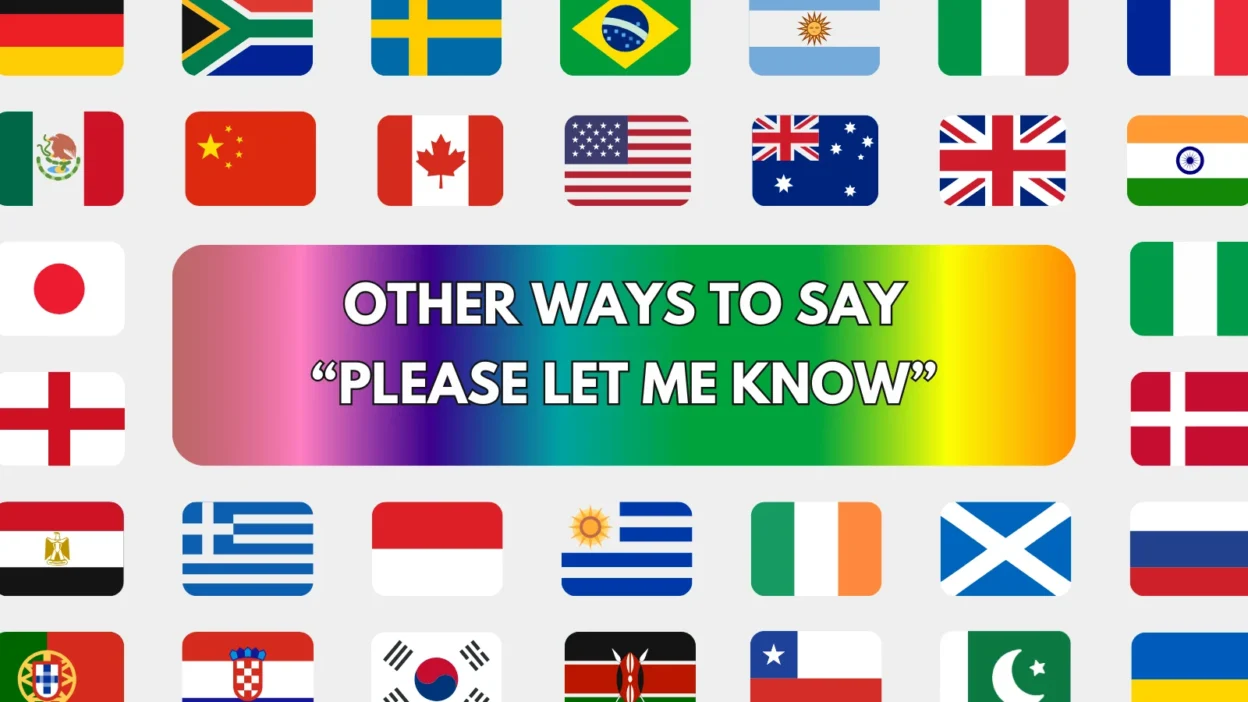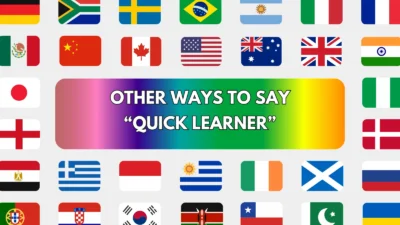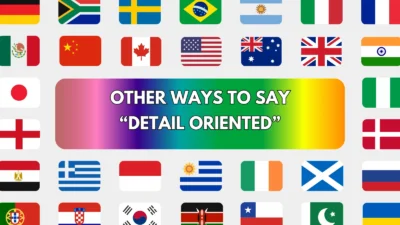The phrase “Please let me know” is a polite and commonly used way to ask for a response, update, or confirmation. It works in emails, texts, and face-to-face conversations. But when used repeatedly, it can feel robotic or overused. Whether you’re writing professionally or chatting informally, having a variety of expressions can help you sound more personal, respectful, and engaging.
Here are 25 effective and professional alternatives to “Please let me know”, each with usage tips and real-world examples to make your communication more impactful.
1. Kindly inform me
Meaning:
A polite request for information or an update.
Detailed Explanation:
This phrase is slightly more formal and is often used in business or academic emails.
Scenario Example:
Kindly inform me if there are any changes to the schedule.
Best Use:
Professional emails, formal requests.
Tone:
Polite, formal.
2. I’d appreciate an update
Meaning:
Asks for follow-up or status with added gratitude.
Detailed Explanation:
This version expresses appreciation in advance and encourages timely replies.
Scenario Example:
I’d appreciate an update once the report is finalized.
Best Use:
Team communication, client relations.
Tone:
Appreciative, courteous.
3. Could you let me know?
Meaning:
A friendly and direct question asking for a response.
Detailed Explanation:
Less formal but still respectful, this is perfect for everyday professional communication.
Scenario Example:
Could you let me know if that time works for you?
Best Use:
Colleague emails, general inquiries.
Tone:
Friendly, respectful.
4. Keep me posted
Meaning:
A casual way to ask someone to keep you informed.
Detailed Explanation:
Very informal, this is used when you expect ongoing updates or progress.
Scenario Example:
Keep me posted on the shipping status, please.
Best Use:
Casual conversations, team chats.
Tone:
Relaxed, conversational.
5. Let me know what you think
Meaning:
Invites someone’s opinion or feedback.
Detailed Explanation:
This version encourages dialogue and is ideal for collaborative environments.
Scenario Example:
Let me know what you think about the new design.
Best Use:
Creative work, brainstorming.
Tone:
Open, inclusive.
6. I look forward to your response
Meaning:
Politely expresses anticipation of a reply.
Detailed Explanation:
Professional and courteous, often used at the end of formal emails.
Scenario Example:
I look forward to your response regarding the proposal.
Best Use:
Business correspondence, formal communication.
Tone:
Professional, polite.
7. Please keep me in the loop
Meaning:
Asks to be included in future updates or discussions.
Detailed Explanation:
Friendly and commonly used in team environments or project tracking.
Scenario Example:
Please keep me in the loop as things progress.
Best Use:
Group projects, internal updates.
Tone:
Collaborative, casual.
8. Let me know your availability
Meaning:
Requests someone to share when they’re free.
Detailed Explanation:
A common alternative when scheduling meetings or calls.
Scenario Example:
Let me know your availability for a quick call next week.
Best Use:
Scheduling, team coordination.
Tone:
Neutral, helpful.
9. Keep me informed
Meaning:
Asks for ongoing communication or status updates.
Detailed Explanation:
Useful when managing tasks or waiting for progress.
Scenario Example:
Please keep me informed as soon as there’s movement on the project.
Best Use:
Work progress, supervision.
Tone:
Professional, firm.
10. Share your thoughts
Meaning:
Encourages feedback or personal input.
Detailed Explanation:
This version focuses more on opinions or ideas rather than updates.
Scenario Example:
Feel free to share your thoughts on the draft when you can.
Best Use:
Creative, collaborative work.
Tone:
Inviting, open.
11. Do let me know
Meaning:
A gentle and polite way to ask for a reply.
Detailed Explanation:
Slightly formal and elegant, great for professional and semi-formal tones.
Scenario Example:
Do let me know if you need any clarification.
Best Use:
Polished emails, client conversations.
Tone:
Warm, courteous.
12. Feel free to reach out
Meaning:
Invites someone to contact you without hesitation.
Detailed Explanation:
This phrase is helpful when offering support or assistance.
Scenario Example:
Feel free to reach out if you have any concerns.
Best Use:
Customer support, colleague help.
Tone:
Friendly, approachable.
13. Notify me when ready
Meaning:
Requests notification once something is complete or decided.
Detailed Explanation:
Concise and practical, this is best for status updates.
Scenario Example:
Please notify me when the invoice is ready.
Best Use:
Task coordination, follow-ups.
Tone:
Straightforward, efficient.
14. I’d be grateful if you could update me
Meaning:
A formal and kind way to request information.
Detailed Explanation:
Adds a touch of humility and warmth, useful in professional writing.
Scenario Example:
I’d be grateful if you could update me on any changes.
Best Use:
Business communication, formal contexts.
Tone:
Gracious, polite.
15. Reach out when you can
Meaning:
Offers flexible timing for a response.
Detailed Explanation:
This relaxed phrase shows you’re not rushing the person.
Scenario Example:
Reach out when you can — I’d love to hear your thoughts.
Best Use:
Casual emails, friendly messages.
Tone:
Laid-back, considerate.
16. Touch base with me
Meaning:
Ask someone to connect or check in with you.
Detailed Explanation:
Used in professional or workplace settings to maintain contact.
Scenario Example:
Please touch base with me once you’re back in the office.
Best Use:
Work emails, team communication.
Tone:
Professional, concise.
17. Ping me when you’re ready
Meaning:
A tech-friendly, informal way to say “contact me.”
Detailed Explanation:
Common in chat platforms or remote work tools like Slack or Teams.
Scenario Example:
Ping me when you’re ready for the review.
Best Use:
Tech, remote teams.
Tone:
Informal, modern.
18. Send me a quick update
Meaning:
A light request for brief information.
Detailed Explanation:
Helps you stay informed without asking for lengthy reports.
Scenario Example:
Send me a quick update after the meeting, please.
Best Use:
Daily work check-ins.
Tone:
Casual, efficient.
19. I’m open to hearing your thoughts
Meaning:
Shows you welcome the other person’s opinion or feedback.
Detailed Explanation:
A softer alternative that encourages honest discussion.
Scenario Example:
I’m open to hearing your thoughts on the strategy.
Best Use:
Collaboration, brainstorming.
Tone:
Receptive, respectful.
20. Please advise
Meaning:
Asks for guidance, instruction, or a decision.
Detailed Explanation:
Common in formal writing, especially in business and legal contexts.
Scenario Example:
We’re ready to proceed — please advise on the next step.
Best Use:
Formal documents, legal/business emails.
Tone:
Professional, directive.
21. Get back to me when you can
Meaning:
Asks for a reply with flexible timing.
Detailed Explanation:
Polite and gentle, useful when urgency is low.
Scenario Example:
Get back to me when you can about the weekend plans.
Best Use:
Casual or semi-professional follow-ups.
Tone:
Relaxed, friendly.
22. Let me know how you’d like to proceed
Meaning:
Requests input on the next steps.
Detailed Explanation:
Encourages shared decision-making and collaboration.
Scenario Example:
Let me know how you’d like to proceed with the edits.
Best Use:
Project planning, team work.
Tone:
Collaborative, respectful.
23. Drop me a line
Meaning:
An old-fashioned and friendly way to say “contact me.”
Detailed Explanation:
More casual and literary, used less frequently today but still charming.
Scenario Example:
Drop me a line if you’re in town next week!
Best Use:
Personal messages, nostalgic writing.
Tone:
Friendly, warm.
24. I’ll wait to hear from you
Meaning:
Gently informs someone that you’re expecting a response.
Detailed Explanation:
Polite and soft, without sounding too pushy or impatient.
Scenario Example:
I’ll wait to hear from you regarding the schedule.
Best Use:
Client follow-ups, formal conversations.
Tone:
Patient, professional.
25. Message me when you’re free
Meaning:
A casual way to ask for a reply at the person’s convenience.
Detailed Explanation:
Flexible and kind, great for everyday messaging.
Scenario Example:
Message me when you’re free so we can finalize things.
Best Use:
Friends, informal chats.
Tone:
Easygoing, informal.
Conclusion
Instead of using “Please let me know” every time, choose an alternative that better fits your tone, relationship, and purpose. From formal emails to friendly chats, these 25 alternatives will help you communicate more clearly, respectfully, and effectively.




